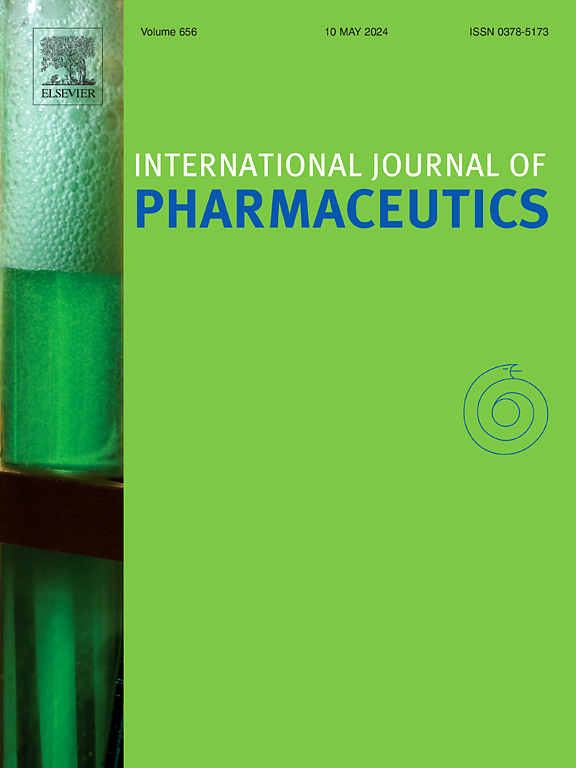A simplified method to interpret the mechanism of drug release from thin polymeric films by drug diffusivity measurements
IF 5.3
2区 医学
Q1 PHARMACOLOGY & PHARMACY
引用次数: 0
Abstract
Drug-polymer interactions and their respective affinities provide vital information for developing any polymer-containing drug delivery system, such as oral films. This paper offers a simplified method to estimate the effects of interactions between the drug and polymers in corresponding film formulations using a recently developed Fickian diffusion-based methodology. Poly(vinyl alcohol-co-vinyl acetate) (PVA/PVAc) copolymers were used as film matrix formers. To systematically vary the hydrophilicity of the polymer and drug, PVA/PVAc copolymers (monomer ratios 35:65, 50:50, 74:26, 88:12, 98:2) and model drugs, hydrochlorothiazide and caffeine (with a factor 1:30 in solubility) were used. Drug diffusivities determined in a polymer solution (5 % w/v) were compared to classical in vitro drug release from the films. The drug release rate from films containing copolymers with a lower VA/VAc ratio (35:65, 50:50, and 74:26) was significantly different for the two drugs in the first 30 min. It was found that this diffusivity method provided valuable guidance in assessing drug-polymer affinity, described as the average theoretical partition constant Km/w between the polymer solution and pure aqueous media. This partition constant could be correlated to the drug release rate and serve as a simple, easy, and inexpensive screening method to provide deeper mechanistic insight into drug release mechanisms. This would allow enhanced sustainability and accelerate the formulation development process by reducing resources needed for the development of film formulations.

求助全文
约1分钟内获得全文
求助全文
来源期刊
CiteScore
10.70
自引率
8.60%
发文量
951
审稿时长
72 days
期刊介绍:
The International Journal of Pharmaceutics is the third most cited journal in the "Pharmacy & Pharmacology" category out of 366 journals, being the true home for pharmaceutical scientists concerned with the physical, chemical and biological properties of devices and delivery systems for drugs, vaccines and biologicals, including their design, manufacture and evaluation. This includes evaluation of the properties of drugs, excipients such as surfactants and polymers and novel materials. The journal has special sections on pharmaceutical nanotechnology and personalized medicines, and publishes research papers, reviews, commentaries and letters to the editor as well as special issues.

 求助内容:
求助内容: 应助结果提醒方式:
应助结果提醒方式:


